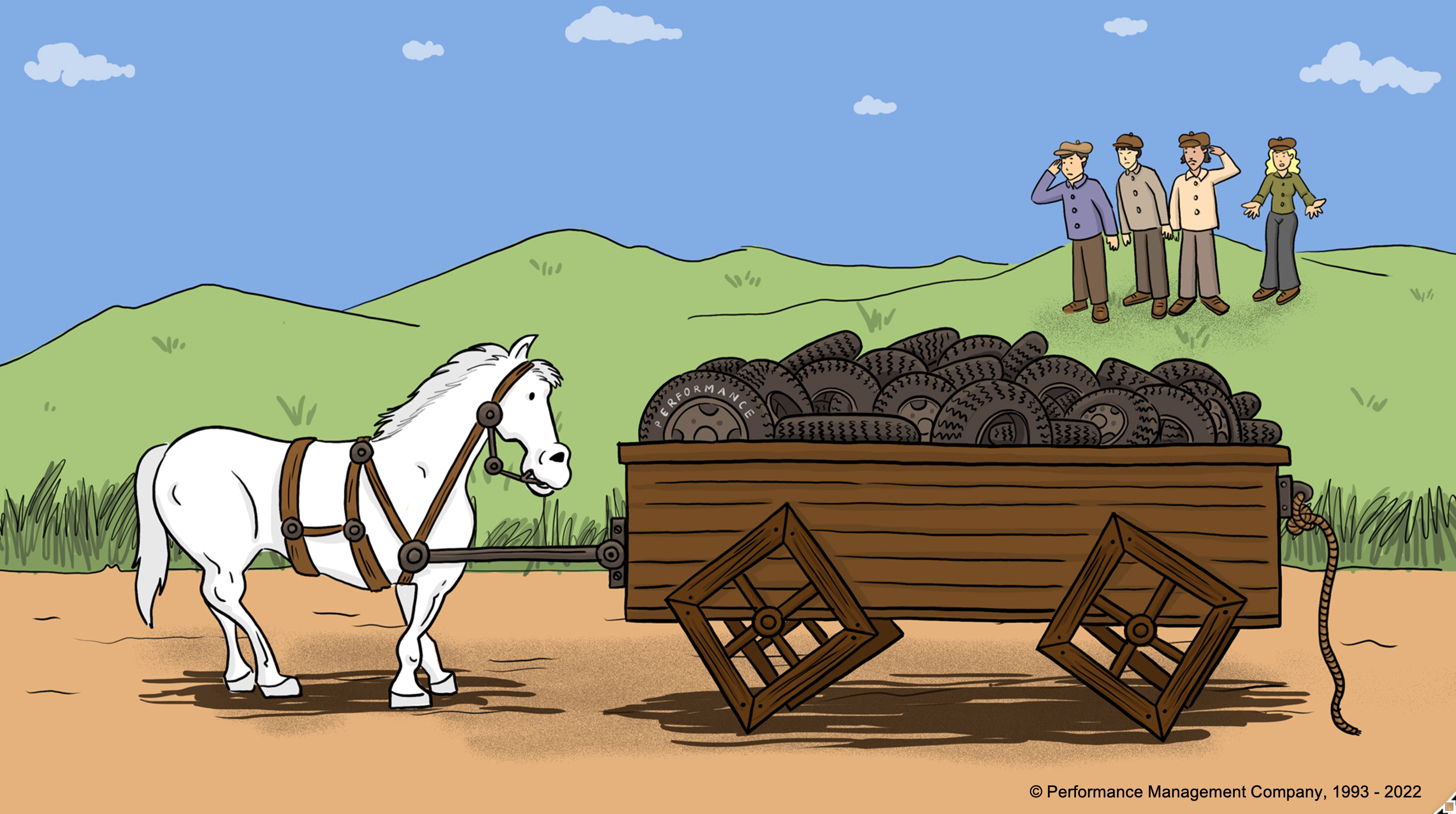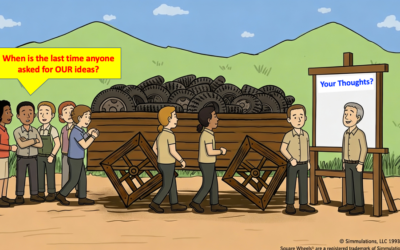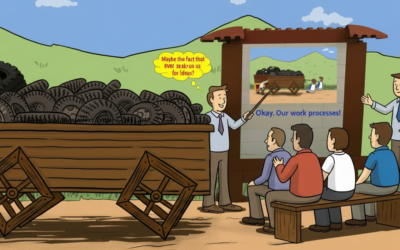Engagement and Innovation are NOT easy things to do, yet they can be accomplished if one remembers that this is all anchored in employee participation and active involvement.
In my “Keeping Things Simple – Involving and Engaging” blog, I shared a cartoon that we call, “Trial and Error”:
Take a moment and look at the cartoon and react to what you see before moving on, please. Just consider what might be happening above.
Okay? Take a moment. Seriously…
When I show this illustration to managers and ask for their reactions, the ratio I get is about 8 : 1 negative to positive. In other words, eight reaction themes focused on the negative and what they did wrong for every one good thing they might see. Mothers usually call this “constructive criticism,” but I am not sure what good purpose it serves to continually point out what people are doing wrong, “even if it is for your own good.” as we so often hear as kids and teenagers (and workers, in so many instances!).
I think we, as managers, are trained to look for business improvement opportunities and to look for things we can improve. That is fine. well and good and serve solid business purposes. But when this gets expressed to our “teenagers” as Non-Support, we cannot expect others to just go along with that. Most people do NOT like the taste of castor oil, even if it IS for our own good!
What managers tend to do looks like this:
We embed the good with the blame and the people are more likely to run over the top of the hill and hide than come back to the wagon and continue to make improvements. Sure, their first attempt was pretty quirky and maybe they missed an idea or two about how they could get things done better.
But they also added a horse to the situation — more horsepower, as it were. And YOU probably have not considered whether this might actually work. What if the next step simply looked like this:
Allow people to do things and celebrate their successes.
Improvement is a continuous continuous process, one that requires celebration of what is accomplished and continued reflection on possibilities and potential shifts in resource utilization.
One might also note, if really looking, is that there might be a horse or evan a train in their future?
———————————–
Update:
I added a short article on Devil’s Advocate roles and building Trust as it relates to organizational improvement. You can see it by clicking on the image below:
—
For the FUN of It!
 Dr. Scott Simmerman is a designer of team building games and organization improvement tools.
Dr. Scott Simmerman is a designer of team building games and organization improvement tools.
Managing Partner of Performance Management Company since 1984, he is an experienced presenter and consultant who is trying to retire!! He now lives in Cuenca, Ecuador.
You can reach Scott at scott@squarewheels.com
Learn more about Scott at his LinkedIn site.
Here is a 2-minute overview of our new online, virtual team building game: https://youtu.be/6sFUOTjdUVg
The exercise has many links to the themes of trust (within and between teams) with a strong focus on trust in the leadership and on collaboration between the teams. This is THE world-class exercise anchored to these elements, based on three decades of client feedback.
This text is a link to a press release about The Search for The Lost Dutchman’s Gold Mine teambuilding exercise and its 30 years of impacting people and performance.
Square Wheels® is a registered trademark of Performance Management Company
The Search for The Lost Dutchman’s Gold Mine is a trademark of Performance Management Company
Square Wheels images © Performance Management Company, 1993 – 2023. All rights reserved.












0 Comments